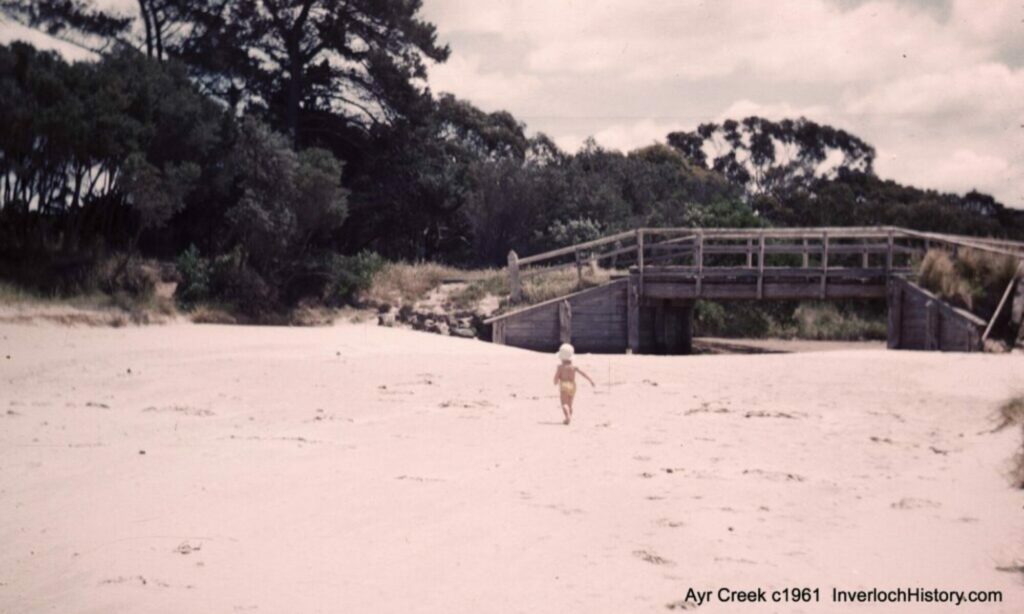(Note: This is a text excerpt. Refer to the newsletter PDF for the complete newsletter including images)
Guest Speaker
The guest speaker at the next General Meeting will be Elaine Miller. She will talk about her memories of Wonthaggi.
Anzac Day 2015
The Inverloch Historical Society was involved with the R.S.L. and other Inverloch Clubs and Groups, in the preparations to commemorate 100 years since the Australian and New Zealand Army Corps landed at Gallipoli. Two Display boards with details concerning World War One were located in The Hub, and Flowers were placed at the Cenotaph during the Anzac Day morning Service.
Excursion to Foster Museum & places of interest along the way
On April 22nd,with Kevin Allen as our bus driver and Vern Burchett providing the commentary, we made our way to the Foster Historical Museum. Including Kevin and Vern, there were 20 members on board as we travelled to Foster via Tarwin, Walkerville and Fish Creek. At the Bald Hills Wind Farm we paused for a short time to watch as most of the blades on the turbines were moving. We made another stop to see all of the turbines from the lookout just past the turnoff to Cape Liptrap. The next part of the journey took us down to the Walkerville North beach, to see the view across Waratah Bay . We were told that it was 10 Km to travel to Walkerville South by road, and to walk along the beach, it was 800 metres. Continuing, on we travelled towards Fish Creek enjoying the lovely scenery of the hills and the farmland before turning towards Foster and the special views of Corner Inlet and the Mountains of Wilson’s Promontory in the background. Arriving at Foster we had morning tea before meeting our tour guide Jennifer Jones who is Curator and President of the Foster Museum. Jennifer has a great knowledge of the Town’s history, and showed us many places of interest. Gold was discovered at Stockyard Creek in 1870, word soon got out and the Stockyard Creek Gold rush began. By 1871 there were hundreds of miners working at Stockyard Creek, with three tonnes of gold found in and around the district by 1879.
Image: The Wind Farm at Bald Hills
Jennifer showed us where Stockyard Creek was in the town and said that in early days the area had been heavily timbered. The town of Foster was named after W.H.Foster, a Warden, who was a nephew of Governor Latrobe. The Miners had argued for the name to be Foster and were successful. The Foster Museum is located in the old Post Office building which was functioning in 1890. It was the third Post Office in the district. In
In 1974 the Historical Society opened Foster Museum in the former Post Office Building, which was moved from the corner of Main St. and Station Rd to its present location near the site of the old Victory gold mine. The Museum features the Foster and districts gold, timber and dairying history, together with an extensive collection of photographs, the former Agnes State School, a furnished early settlers’ cottage, replica bark hut and H.L.Lasseter’s work boat amongst other displays. On the occasion of our visit, there were a number of displays featuring the 100th anniversary of the landing at Gallipoli.
Jennifer guided us further around the town as we saw the site of the old Police stables and now the site of the police Station.
Another point of interest was Church Hill where interestingly, it was the place where all the churches in the town were located. Most of the churches were destroyed in bushfires, however the Roman Catholic Church was not affected.
The medical precinct was most impressive, consisting of the South Gippsland Hospital, the Medical Centre, a Specialist building and the Prom. Country Aged Care Centre.
Jennifer told us that Foster was a productive agricultural area.
We moved on to the site of the old Railway Station, in use when the train came from Melbourne to Foster. It has been renovated and is now the Men’s Shed.
Image: Statue in the main street
Harold Lasseter lived in the Foster Toora area from 1918 to c1923. He was well known to many people as the man who perished in the Central Australian desert in 1930 while on an expedition to find a fabled golden reef. Lasseter undertook many activities during his life in Corner Inlet district including survey work. Lasseter had grand ideas to boost Corner Inlet district. An original signed blueprint of his project is at the Foster Museum as is his workboat ‘Victory’.
At the conclusion of Jennifer’s guided tour, she was thanked with acclamation for her excellent presentation. Our group then went in various directions to have lunch, after which we had the opportunity to explore the Museum, which was very interesting and well worth the experience. At the conclusion of our journey, we thanked Kevin Allen for being our bus driver for the day, Vern Burchett for his commentary along the way, Robyn Allen for her organisation before the excursion, and I would like to thank Barbara Houston for taking a large number of photographs for the Newsletter, as well as placing the photos in an album for display at our meetings.
Images: Foster Historical Museum. Our driver, Kevin.
Vale
We were saddened to learn that Kath Bendle had passed away recently.
Kath was an active member of the Historical Society for many years. We remember Kath for her cheerful nature, and her support and encouragement for the Historical Society’s activities at all times. We will miss her very much, and we send our condolences to all members of her family.
Editor: Ian McBurnie

